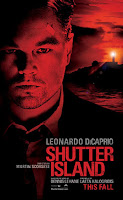Censorship
Who are the BBFC and what is their role?
The BBFC are the British Board of Film Classification, their role is to give studios, parents, and directors guidelines through regulating and film classification. The BBFC ensure that children and all filmgoers are protected from harm and illegal material, so they can make informed decisions about their viewing choices. They are also a designated body and therefore have legal powers to rate and sometimes cut, or reject works.
Why is the role of the BBFC important to the film industry?
The role of the BBFC is important to the film industry as they protect younger audiences and assist parents to make informed decisions as to what to let their children watch. If the BBFC didn't exist there would be no regulation in films and younger audiences would be exposed to illegal or harmful things. This could affect them mentally or emotionally. The ratings that the BBFC give out are well worked out according to the content in the film, a PG rated film will not have any drug use in it, it would have to be rated minimum of 15. This shows that children under age of 15 should not be exposed to drug use and those that are 15 and over are old and mature enough to handle viewing it, and not mimic it. Therefore, ratings can also help an audience predict what they should expect from a film, an 18 rated film will most likely have strong violence, sex or drugs in the film and people 18 or over can make informed decisions as to whether they would like to watch an 18 rated film or not.
What things get censored and why?
There are many themes and references that get censored to not expose the wrong things to audiences so they are not affected in any way. Examples are:
- Extreme violence
- Sexual violence
- Gore
- Sex and nudity
- Religion
- Controversy and the press
- Graphic representation
- Race
- Culture
- True events
- Drug abuse or glorification
- Language
What is the difference between films being cut and banned?
Cut
If a film is cut it is being edited to make it appropriate for viewing, this is after it has gone through screening with the BBFC. If a film is to be rated 12, it cannot show a scene with nudity, therefore it has to be cut so it can be given the rating of 12, if not it will have to be rated a 15 or 18.
The Human Centipede 2 is an example of a film that was cut. It was given the age certificate of 18 after the distributors agreed to make 32 cuts lasting two minutes and thirty-seven seconds.
Banned
If a film is banned, it is taken away from cinema viewing entirely due to indecent, harmful or offensive material. If the BBFC decide the content is inappropriate for all viewers and it could have a negative impact, they may ban the film from even entering cinema screens. Usually it is due to excessive amounts of extreme violence, nudity and sexual violence.
Grotesque is an example of a film that was banned, it was banned due to a high level of sexual torture, it also lacked context or purpose behind the content.
Discuss the Forna (for) and Kermode (against) debate, and then discuss where your own opinions lie on this matter.
Aminatta Forna and Mark Kermode have different views on film censorship. Forna argues for film censorship and Kermode argues against her views.
Forna argues that film censorship is used to prevent younger audiences to follow or be influenced negative actions shown in films. Examples of these are drug use, criminal behaviour or violence. This can also be linked to some films showing racism and racial violence, Forna argues that these films could influence younger audiences as the images on shown in film are powerful enough to do so. Her argument supports the BBFC and what they do to protect viewers, especially younger viewers.
On the other hand, Kermode argues that the use of censorship in film and age certificates should not be allowed due to freedom of speech, directors and producers should be allowed to express whatever they want through film and should not be limited due to censorship. As well as this, he argues that cutting parts of film can ruin a film or make it 'dull'. Also, even though some scenes are cut from a film, it can still affect younger audiences as there are still suggestions such as blood or the reactions to certain violent events.


Conclusion
My research has helped me conclude that my thriller opening will contain appropriate themes for my audience. It will not contain extreme violence or drug use, as these have all previously caused problems in the film industry. I have also learned that the BBFC are very important to act as guidelines for film viewers and I should use these guidelines when making my film as I will need to tackle themes appropriately. For example showing scary scenes with the lighting and soundtrack rather than displaying a lot of blood and violence. Furthermore, I now understand that to use certain themes such as extreme violence and gore has to be justified within the film rather than just there to please an audience, as it is more likely to psychologically effect the audience if there is no motive to violence and gore.































